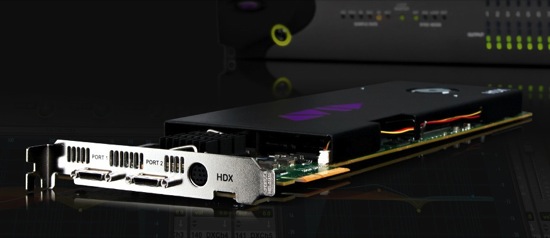Have Hardware Solutions Had Their Day Or Not? Discuss

In Podcast 117 we discussed Michael’s comments he made in a story we posted. Two community members picked up on where we took the discussion as we moved onto Native versus DSP hardware and the pros and cons of both. Anthony Dominello first…
Hello team, your Proposal Guy is also an IT guy with 20 years’ experience and so I want to elaborate on the discussionon native vs. DSP. During the conversation James mentions Moore’s law (good on ya!), but then dropped the thread. I wanted to elaborate on that a little to give some more perspective on this since I think it has implications for the whole industry, and Avid (or any other company with hardware DSP solutions to hawk) in particular.Moore’s law states, in simple terms , that the power of computing chips will double every 18 months. Leaving aside for the moment the question of how long that can be sustained, the fact is that it has held true since Gordon Moore (co-founder of Intel) coined it in the early ’70s. What that means, in practical terms, is that DSPs make no sense from a performance standpoint due to the huge lag time in developing a new platform like, say, HDX. By the time it even gets to market it’s obsolete or, at very least, on its last legs as a cutting-edge platform. It would be phenomenal if there were some way to upgrade the chipset on DSP cards like some install faster processors on their computers or overclock them. The problem with that, however, is that HDX (SoundGrid, etc.) are proprietary architectures and are in most cases illegal to “hack.” PC Architecture has been open since IBM introduced it so anyone can modify it at their own will and peril.This has happened in the computer industry for decades. That is, someone develops a hardware solution for something— say encryption. Then someone else figures out a way to do the same thing in software and. as computers get more powerful, software becomes the preferred option. The history of IT is littered with companies who bet it all on a hardware solution, only to be swept away when increased computing power made their hardware solutions too expensive to compete. This is what Avid is up against when selling HDX systems to new customers. Certainly the quest for low latency is a factor, but the actual power of the DSP chips themselves makes less and less sense in the face of modern computing. I believe you said it yourselves when you speculated that HD Native may be Avid’s true “killer app,” were it not for the totally unnecessary limitations Avid put on it’s I/O count.
Chris Carey picked up Mike’s thoughts about having an Intel chip or chips as a DSP card…
Regarding your DSP discussion in podcast 117, you were trying to think of examples where companies had designed DSP around a standard intel chip. While it’s not exactly the same, Logic used to offer (and may still, but I’ve been PT only for several years) a feature to setup processing nodes via LAN. I tend to agree with Russ’ statement about changing the focus of plugin development to efficiency, but this would be an incredibly useful feature for those moments where you need just a little more processing headroom for your 127th convolution reverb. What are your thoughts on this? Has dedicated hardware had its day or not?
Mike was recently talking to someone who was considering purchasing an Avid S3L. As we discussed it, the reason for this choice became apparent - it was largely driven by the fact that the S3L is a dedicated hardware solution based around the Avid HDX architecture with dedicated I/O that makes it great for tracking and mixing. It doesn’t do anything else, doesn’t pick up email, surf the internet, it has been optimised to be a great recording and mixing system.
In a similar vein Russ did some experiments on running a clean system and comparing the performance of both setups on the same computer.
Do you prefer the flexibility of a computer based solution that can do many tasks with the same system or the benefits of multiple dedicated solutions? Is the Avid S3L the unsung hero of the Avid range? Discuss….